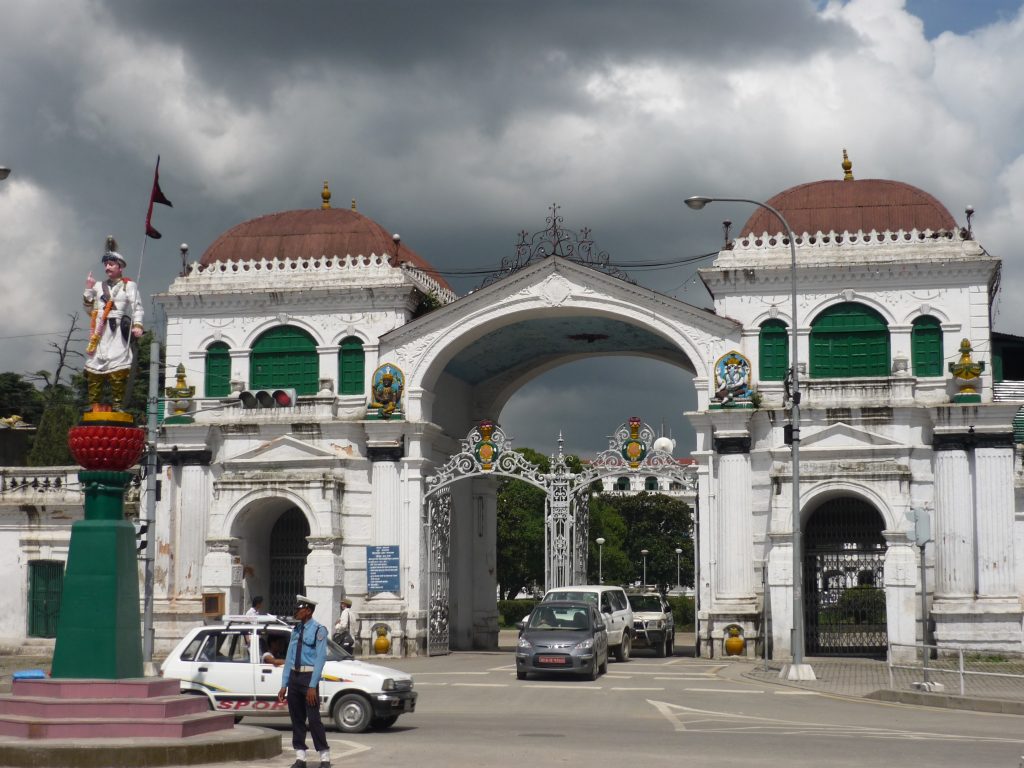Government Crisis in Nepal: Political Transformation at the Crossroads?
Political instability is back in Kathmandu. At the end of December, Prime Minister Oli unexpectedly had the parliament dissolved in a power struggle within his ruling Nepal Communist Party (NCP) that had been simmering for months. This move, that many observers describe as unconstitutional, has now led to the breakup of the ruling party.
Outrage has been running high in the country on the edge of the Himalayas since President Bhandari dissolved parliament on 20 December 2020 and called early elections for the end of April, at the request of Prime Minister Oli. Representatives of civil society, the opposition and members of the ruling NCP accused Oli of breaking with the constitution and mobilized their supporters. Thousands of demonstrators took to the streets in Kathmandu and other major cities, united in their demand for the reinstatement of parliament. The prime minister’s opponents point out that Nepal’s constitution only allows for the dissolution of parliament if the government no longer has a majority there. However, the ruling party has almost a two-thirds majority. The constitution also requires an examination of whether an alternative government could be formed instead. That did not take place. Therefore, his critics argue that Oli’s actions are unconstitutional. The prime minister justified them with a lacking willingness to cooperate within his party, which stood in the way of decision-making. But it appears that Oli acted primarily to preserve his own power. With this maneuver, he apparently wanted to forestall an attempt by his opponents in the ruling party to have him removed from office and also to remove him from the post of party leader. The case is now before Nepal’s Constitutional Court and is considered its most important one since the new constitution entered into force in 2015.
Initial signs of the political crisis
This escalation was preceded by a long-running conflict over power in the NCP. The party was formed in 2018 through the merger of the Communist Party of Nepal-Maoist and the United Marxist-Leninists (UML), the country’s two largest communist parties. They contested the last election together and won it by a clear margin. The young ruling party is led by the long-standing heads of the predecessor parties, each of which seem anxious not to lose their own influence. Oli’s main internal opponents are the two former prime ministers Pushpa Kamal Dahal, also known as Prachanda, and Madhav Kumar Nepal.
A central stumbling block in the internal party dispute has its roots in the strategic power considerations of the actors. Oli’s unwillingness to share power, an important basis for the functioning of democratic political systems, is at the center of the criticism. Unofficially, Oli and Prachanda had agreed to share the office of prime minister, with a change of personnel halfway through the term. In the previous coalition government between the Nepali Congress and the Maoists, such a change of prime minister had already been practiced once. However, when the time came to hand over the post of prime minister to Prachanda in the spring of 2020, Oli refused to relinquish it and remained in office. Since then, there has been great tension between Prachanda and his supporters in the party on the one hand and Oli’s group on the other. Oli’s opponents accuse him of also failing to honor an agreement on the division of responsibilities between the two, according to which Oli was to be in the leadership role in all government affairs, while Prachanda would be the main person responsible for running the party. Instead of including them, critics said, Oli bypassed senior party members on key decisions and appointments and sought to keep them in his own hands.
The current government crisis also overshadows the health crisis triggered by the Corona pandemic. It apparently failed to unleash a unifying dynamic of bringing political opponents to the same table to work out solutions to it, despite their differences. Instead, the shortcomings in the management of the pandemic provided Prachanda and his supporters with another welcome occasion to criticize the prime minister.
After the disintegration of the ruling party seemed imminent several times in 2020 due to the existing conflict, the final split has now occurred. The two rival camps around Oli on the one side and Prachanda and Madhav Kumar Nepal on the other have since made it very clear which verdict they expect from the constitutional court on the dissolution of parliament. While it is still pending, one thing seems certain: the country will be facing politically more turbulent months.
Role of China and India
These developments have not gone unnoticed in the region. Nepal’s powerful neighbors China and India are watching the political turmoil in the country closely. They have no interest in a destabilizing Nepal. The fear of losing influence in the Himalayan state to the other great power also plays a role here. Traditionally, Nepal has been a partner of India. Since the now-defunct government took office, however, the country has turned more toward its northern neighbor than before. China is considered the architect of the merger of the Communist Party of Nepal- Maoist and the UML to form the NCP. Within days of the dissolution of parliament and the splitting of the ruling party, China was on hand with a delegation to hold talks with the two rival blocs. This suggests that the country sees its interests and influence threatened by this disintegration. Nepalese media report that the Chinese ambassador in 2020 has already intervened and mediated in the intra-party conflict on several occasions. However, neither she nor her Beijing counterparts have been able to persuade the feuding camps to continue working together. India, in contrast, has so far taken a more reserved stance, calling the dissolution of parliament an internal matter. Bilateral relations with Nepal had recently suffered from a border dispute that remains unresolved.
Lost in Transformation?
Nepal’s political transformation process is suffering a setback because of the current developments. For many years, the country has struggled with political instability and its negative consequences for long-term and coherent policy-making. Almost every government since 1990 disintegrated before the end of its term. Between 2008 and 2018 alone, the country had a total of ten different governments. While recent years gave the impression that Nepal was increasingly leaving frequent premature changes of government behind, hopes for more stable political conditions are fading against the backdrop of current developments. This is regrettable since the Transformation Index BTI described political and economic developments since 2017 as a time of upswing and cautious optimism in Nepal and attested to the country’s progress in these areas. The new institutional framework created by the 2015 constitution was intended to help stabilize political conditions. Among other things, the constitution has made it more difficult to dissolve parliament. If its creation process was conflict-ridden and accompanied by unrest, the constitution now faces a serious test. Overcoming the old behavioral patterns of the political leadership, which are creating instability and are currently reemerging, would represent a significant step for Nepal.

